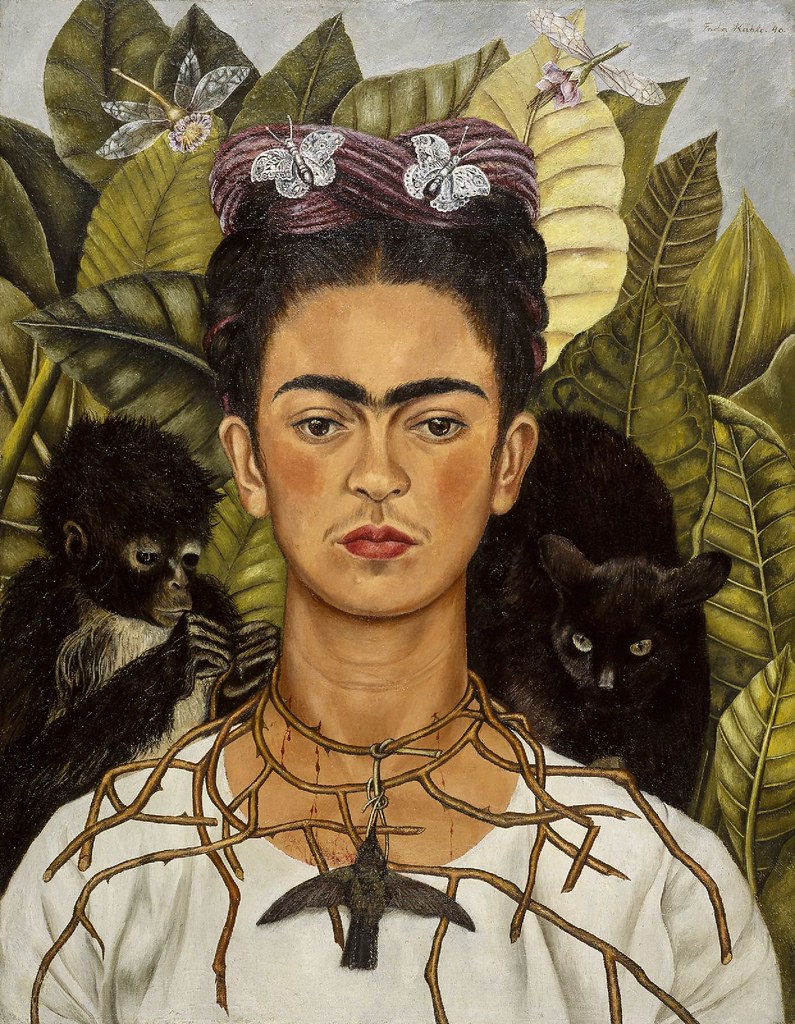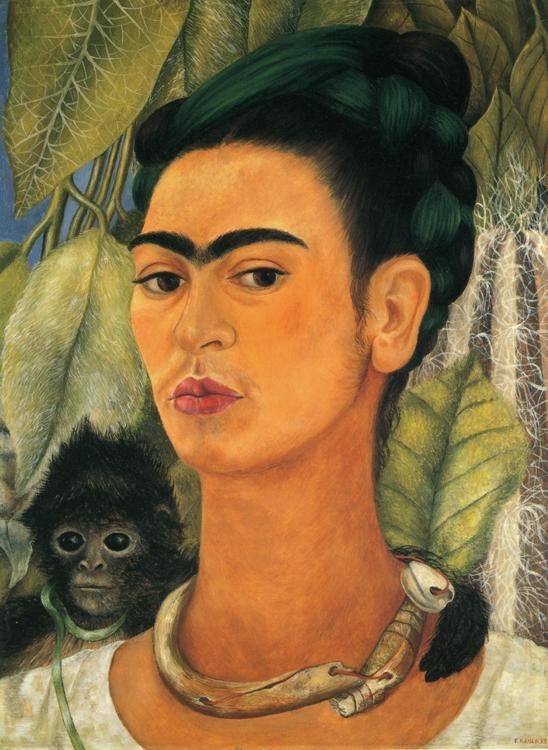 |
| Self-Portrait Frida Kahlo / CC BY 2.0 via Flickr |
"I never paint dreams or nightmares. I paint my own reality," Frida Kahlo has been quoted as saying about her art. This unique Mexican painter is not exactly a conventional hero, but someone I believe exemplifies some heroic traits. She was an artist who stood out in her time and today, and may not have always been approved of by the public. Today though, the famous image of Frida can be seen on anything from beach bags to earrings and T-shirts. She has become an iconic figure in Mexican culture and is seen as a special kind of hero for many Mexicans and people like myself outside of her home country.
 |
| Frida Kahlo Guillermo Kahlo / Public Domain via Flickr |
Frida was born in 1907 in Coyoacan, Mexico, and lived during the time of the Mexican Revolution. She spent much of her life in physical pain, due to disabilities from childhood polio and a terrible bus accident as a teenager that left her with severe injuries that plagued her throughout life. It was during her very long recovery from the latter incident that Frida became a painter, instead of continuing into the medical field as she had planned. She was married to the famous Mexican muralist Diego Rivera, and this tumultuous relationship was a source of emotional pain throughout most of their time together. She was a supporter of the Revolution and involved with several important political figures of the era. Her work, however, was primarily personal, and her well-known paintings are all self-portraits. She lived a life that was bold, untraditional, and often filled with pain, and this is reflected in her artwork.
While all aspects of Kahlo's life may not be admirable, I believe her approach to life was heroic and this is visible in her paintings. Frida was a true individual, and she painted herself as she was, including her ever-prominent unibrow! She depicted herself and the experiences of her life in a way that was honest and revealing, and this is courageous. A lot about her experiences and identity is evident in her self-portraits. She shows herself in decorated, indigenous-style clothing, as she wore in her daily life, and often included symbols of Mexican folklore. She represents a national spirit and belief in her country that may be part of her appeal to the public. She also shows vivid depictions of the experiences of her life, documenting her painful relationship with Rivera, her multiple miscarriages, and her continuous physical ailments that limited her mobility. Through allegories and stark images of reality, Frida's paintings tell the complete story of her life.
|
|
I think Frida's actions and attitudes illustrate the character pillar of responsibility, as this artist fully committed herself to being the best she could be and set an example for others in how she lived her life and faced hardships. She is a real role model for girls as a strong woman of strength and determination who was proud of who she was and chose her own path in life. Her artwork illustrates this, revealing an artist who brought a bold and unique approach to her artistic style, as she did to other parts of her life. After over thirty operations, when Frida was nearing the end of her life at the age of 47, she faced death as she had the rest of her life. When she had her first and only exhibition in Mexico and was ordered to stay in bed by doctors, she responded by having her bed carried into the gallery. This one incident shows the kind of spirit that Frida Kahlo had, which made her a person to admire then and today.
 |
| Self-Portrait Frida Kahlo / Public Domain via Wikimedia |
I have always been interested in Frida Kahlo's art, and the more I learn about her, the more I admire her as a person. She is not a typical kind of hero, and she may have made choices in her life that others would not approve of. Frida was the kind of person who chose to live her live in a remarkable way though, and created a lasting legacy of this with her artwork. In my opinion, this makes her a heroic figure. With the bold stare we see in her self-portraits, she seems to be challenging the person looking back at her to live the life one chooses. She sends a message of inspiration to viewers of her artwork to embrace one's own identity and face hardships with a courageous attitude.
Page created on 12/27/2011 12:00:00 AM
Last edited 6/24/2020 10:08:38 PM
Sources used:
-PBS- Life and Times of Frida Kahlo http://www.pbs.org/weta/fridakahlo
-movie "Frida," 2002 director Julie Taymor
-book Frida Kahlo 1907-1954: Pain and Passion, by Andrea Kettenmann, Publisher: Taschen, 1999
